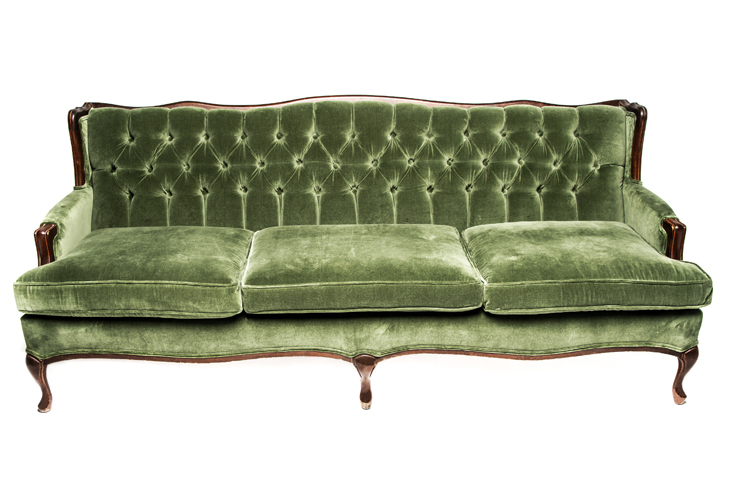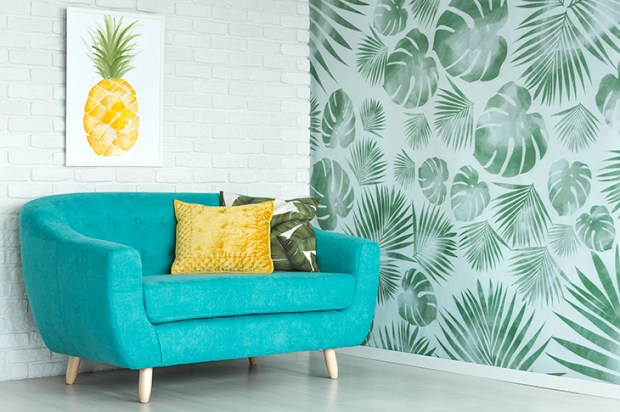You can tell something about national character from the way a country clears its cupboards. In the States they have the yard sale. The American dream remains a detached house with a front and a back yard, all enclosed by a white picket fence. Daughter selling lemonade, son playing catch, consumer goods spread on the lawn. The French have the vide grenier — the emptying of the attic. The Frenchman in his romantic soul still imagines he is a poet or a painter starving for love and art in a bare, unfurnished room. The English have the car-boot sale. We take a picnic, waterproofs, stop at a stone circle on the way, and when we are ready to pack up and leave, we leave.
Back in Blighty after a year in France, I have been finding homes for my attic trufflings. The cups from Vincennes, the napkins from Aix, the enamel pot from Avignon, the measuring jug from Bordeaux: all part of a campaign to undo what I had previously done. Decorating the flat eight years ago, I furnished by brochure: Ikea and Oka. A friend, now the proprietor of a smart shop in Kensington, came for a housewarming dinner. ‘Oh,’ he said, looking around. ‘Just like the catalogues.’ I’m still smarting.
Some people declutter, I decatalogue. As each Ikea colander and side table has split, buckled and collapsed, I have replaced it with something sturdier, secondhand. Don’t believe that millennials won’t buy brown furniture. This one does. Edwardian desks, Victorian chests, campaign tables. Anything but a Billy bookcase. Cheaper, too, by some multiples, than the mid-century-modernish stuff at Dwell, Nest and Made.
I wonder, though, as I look proudly around the nest I have made, whether I might not have fallen into another sort of trap. Not the smooth, staged homogeneity of the catalogue, but the smooth, hipster homogeneity of the international Insta-interior. Click here for quirk. I fear I have replaced one sort of room-set — Scandi modern meets Goan gap year — with another — the curated charm and studied informality of Pinterest and Instagram. Eighteenth-century engravings alongside vintage London Transport posters? Check. Succulents in pots thrown in mindful ceramics classes? Check. Falconware enamel? Japanese tea bowls? Check. Check. Moorish tiles in the bathroom for that Bayswater souk look? Check.
Just as the hipster aesthetic in bars and restaurants went global — refectory tables, chipped crockery, baba ganoush in Kilner jars, making a micro-brewery or kimchi pop-up in the Paris banlieue indistinguishable from its sibling in Brooklyn, Brixton, Antwerp, Tokyo — so the supposedly idiosyncratic interior is replicated in studio apartments the world over. If in the last year you have found yourself hankering after a teal velvet sofa, a mustard corduroy armchair, a tufted Berber rug or a bedroom papered in galloping zebras, chances are you’re spending too much time on Insta-gram.
Each January, Pantone releases its Colour of the Year. This time it’s Living Coral. Internet influencers take the theme and run with it. If you start spotting deep-pink cushions on friends’ sofas, you’ll know why. As I scowl at the damp patch on the sitting room wall, I see not a problem but an opportunity to redecorate. But do I want walls painted in Farrow & Ball’s Radicchio because it is truly my taste? Or because I have seen something like it on my daily scroll?
One of my side-gigs is visiting homes for the interiors mags. There is a strange sort of intimacy to sitting with a stranger in their downstairs loo and saying: ‘So, tell me all about it.’ I have been through-the-keyhole into strange and beautiful homes. After writing about the singular character of the house, the owner’s knack and flair, I compile a ‘Get the look’ box of high-street buys to run in the back pages. Editors have the decency to be embarrassed about this, but it keeps the advertisers happy. What strikes me about these houses is that there is no grand design. They are made over many years, many generations. They are not cribbed composites of tear sheets and screen grabs.
As I embark on a biography on Jim Ede, the man who created Kettle’s Yard in Cambridge, I have been thinking about what makes this particular house a home. Ede called the book he wrote about Kettle’s Yard A Way of Life. The house was, Ede said, ‘a prayer’: a thanksgiving to art, to nature, to light. One could try to Get the Kettle’s Yard look — go monochrome, lay white rugs, arrange spirals of shells and pebbles — but the effect would be empty imitation. If it is not your way of life then the result can only be deadening. Better a home that is yours, frayed at the edges, hodge-podge, kitsch, 30 years out of date, than copied and pasted from the pinboards and hashtags of others.
Got something to add? Join the discussion and comment below.
Get 10 issues for just $10
Subscribe to The Spectator Australia today for the next 10 magazine issues, plus full online access, for just $10.
You might disagree with half of it, but you’ll enjoy reading all of it. Try your first month for free, then just $2 a week for the remainder of your first year.















Comments
Don't miss out
Join the conversation with other Spectator Australia readers. Subscribe to leave a comment.
SUBSCRIBEAlready a subscriber? Log in